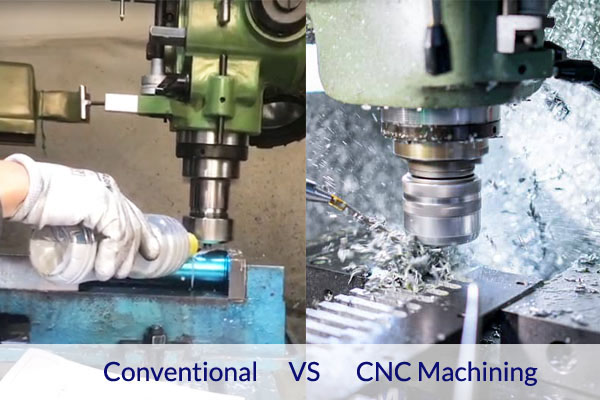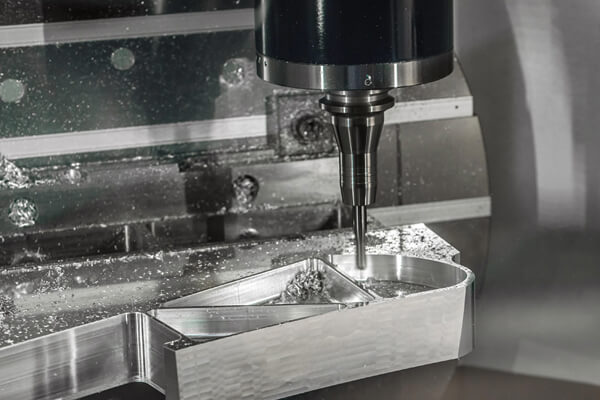Manual Machining vs. CNC Machining
People dislike change. It may surprise you to learn that some people insisted on keeping their slide rules even after calculators were created. Similar to CNC machining, manual machining methods are still preferred by some despite the fact that CNC machining was developed decades ago. Despite the fact that CNC technology can produce and duplicate precision parts that are totally interchangeable with one another, manual machining methods must create matched sets of matching components or create unique replacements, explaining why this preference still exists.
Manual machining and CNC machining have each characteristics for different people. At Sungplastic, we always use CNC machining for batch manufacturing catering to the market demands.

Various Categories of CNC Machines
CNC machining has the capacity to fabricate an extensive range of components, spanning from elementary parts to intricate assemblies. Whether you require the creation of a gear shaft for an automotive application, an inlet for a heat exchanger shell found in military transport vehicles, a precise electrical contact for a fighter jet, or even a life-preserving pacemaker, CNC machining stands as the cornerstone of this process.
CNC, or Computer Numerical Control, entails the input of a meticulously sequenced set of instructions into a specialized, programmable controller. These instructions are then employed to guide the movements of a machine tool. Across all CNC methods, the significance of data input, computer-based control, and diligent monitoring is pivotal to the machining operation. Additionally, the path that the tooling follows in material removal is precisely governed by computer-generated programming, often involving intricate algorithms and interpolation.
Outlined below are the most prevalent types of CNC machines, each accompanied by insights into their common applications and capabilities in comparison to their manual counterparts.
CNC Milling Machine
Operational Overview
CNC mills eliminate material from a workpiece, securely attached to a table, through contact with a mobile, rotating tool. Typically, these mills offer multiple degrees of freedom, enabling machining on various planes in a single setup. CNC mills excel in high-precision, high-speed manufacturing, capable of tasks such as drilling, slot cutting, planing, grooving, and engraving.
Types of Parts
CNC mills can craft a wide array of parts with intricate geometries, including fittings, housings, brackets, gears, pacemaker shells, cast part modifications, weld grooves, cylinder heads, prototypes, and gearboxes.
Advantages over Manual Machining Operation
CNC mills surpass their manual machining counterparts in precision and accuracy due to their ability to leverage computer technology for positioning, depth control, and speed. Unlike human operators of manual machining mills, CNC mills can perform real-time calculations and adjust settings based on feedback. Additionally, CNC mills can work on multiple planes simultaneously, enhancing productivity.

CNC Lathe
Operational Overview
CNC lathes subtract material from a rotating workpiece using a stationary cutting tool. They are primarily used for creating conical or cylindrical shapes and surface flattening. Lathes can also modify surface roughness and perform operations such as drilling, boring, reaming, tapping, facing, and chamfering. A machine of CNC turning, a more advanced version, features multiple tool changers and a chip conveyor.
Types of Parts
CNC lathes are best suited for producing conical or circular parts, including fasteners, shafts, probes, pins, electrical contacts, pipe fittings, spindles, and modifications to pre-machined or formed parts.
Benefits over Manual Machining Operation
CNC lathes replace manual lathes, which require highly skilled operators with extensive training. They offer superior precision, eliminate manual machining setup, and vastly increase production efficiency compared to their manual machining counterparts.
CNC Electric Discharge Machine (EDM)
Operational Overview
An EDM is the most intricate CNC machine in this list. It employs electrical discharges or sparks to remove material from a workpiece submerged in dielectric fluid, positioned between two electrodes. The computer calculates the voltage required to discharge through the dielectric fluid to shape the desired features. The part remains partially or fully immersed in dielectric fluid and does not come into direct contact with the tool; instead, sparks serve as the cutting mechanism.
Types of Parts
EDM is ideal for machining complex parts that are typically challenging to manufacture, including hardened or heat-treated parts, thin-walled components, molds, CNC tooling, metal matrix composites, and fashion items like watches and jewelry.
Benefits over Manual Machining Operation
EDM services can replace nearly all manual machining operations, even those performed on mills and lathes, provided the materials are conductive. While wire EDM costs more, its precision and setup offer a favorable cost-to-benefit ratio.
CNC Machining: Elevating Accuracy, Precision, and Part Interchangeability
In addition to its remarkable versatility, CNC machining is readily accessible across various industries, with its utilization consistently on the rise. The global CNC machine market is on a significant growth trajectory, poised to surge from $83.99 billion USD in 2021 to $128.41 billion USD by 2028, signifying a remarkable 50% increase. This expansion is primarily attributed to the escalating demand for enhanced manufacturing efficiency and precision.
The key distinction lies in the fact that CNC machines can execute a multitude of precise adjustments to cutting rates, depths, and positions, surpassing the capabilities of human operators working with manual machining mills or lathes. CNC machining can achieve tolerances down to a thousandth of an inch within minutes, while manual machining necessitates hours of setup, intricate calculations, and meticulous measurements, not to mention years of training, to accomplish the same level of precision.
Due to their computational prowess, CNC machines fabricate parts with unparalleled accuracy and precision, rendering them perfectly interchangeable within various assemblies.
Sungplastic: CNC Machining Centre for You
We really hope that this explanation of the advantages of CNC machining over manual machining techniques has been helpful to you. While manual machining will always have a place in hobby, woodworking, and prototyping applications, CNC machining is a tremendous improvement for industrial production.
CNC machines not only produce parts more quickly, but they also produce more exact parts with less scrap and with less effort. Additionally, they speed up production, which boosts client satisfaction. Therefore, despite the fact that manual machining aficionados may not favor change, they do enjoy producing money and keeping their clients satisfied, and CNC machining makes it simpler to do both.
Our skilled and knowledgeable CNC machining center can provide you with the quality parts you want.
Welcome to contact us.
Get a free quote and design analysis today.
We’ll reply to you within 6 working hours.
We respect your privacy.
+86 139 2927 4777 (WhatsApp, Wechat)
